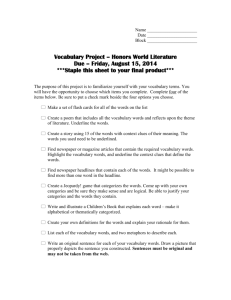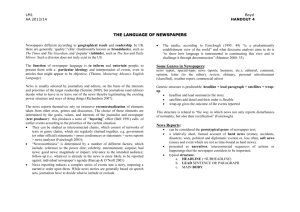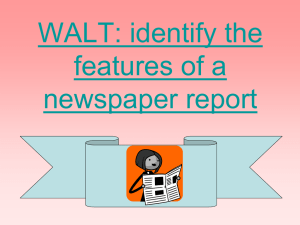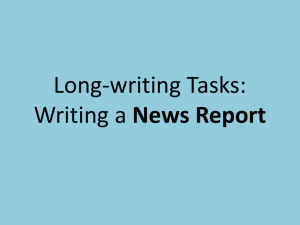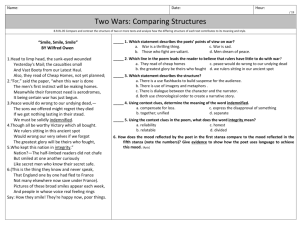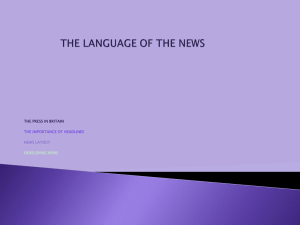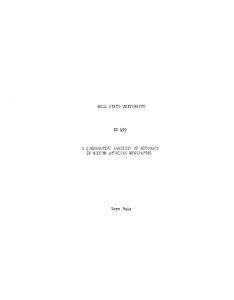An English language newspaper usually has many pages, and of all
advertisement
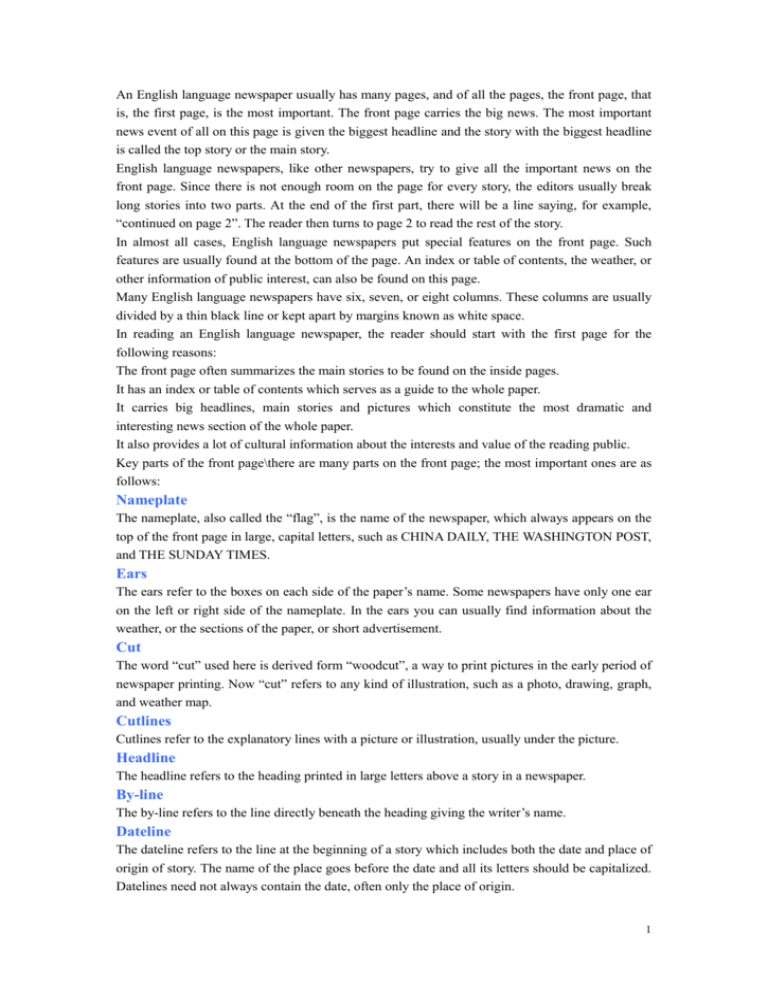
An English language newspaper usually has many pages, and of all the pages, the front page, that is, the first page, is the most important. The front page carries the big news. The most important news event of all on this page is given the biggest headline and the story with the biggest headline is called the top story or the main story. English language newspapers, like other newspapers, try to give all the important news on the front page. Since there is not enough room on the page for every story, the editors usually break long stories into two parts. At the end of the first part, there will be a line saying, for example, “continued on page 2”. The reader then turns to page 2 to read the rest of the story. In almost all cases, English language newspapers put special features on the front page. Such features are usually found at the bottom of the page. An index or table of contents, the weather, or other information of public interest, can also be found on this page. Many English language newspapers have six, seven, or eight columns. These columns are usually divided by a thin black line or kept apart by margins known as white space. In reading an English language newspaper, the reader should start with the first page for the following reasons: The front page often summarizes the main stories to be found on the inside pages. It has an index or table of contents which serves as a guide to the whole paper. It carries big headlines, main stories and pictures which constitute the most dramatic and interesting news section of the whole paper. It also provides a lot of cultural information about the interests and value of the reading public. Key parts of the front page\there are many parts on the front page; the most important ones are as follows: Nameplate The nameplate, also called the “flag”, is the name of the newspaper, which always appears on the top of the front page in large, capital letters, such as CHINA DAILY, THE WASHINGTON POST, and THE SUNDAY TIMES. Ears The ears refer to the boxes on each side of the paper’s name. Some newspapers have only one ear on the left or right side of the nameplate. In the ears you can usually find information about the weather, or the sections of the paper, or short advertisement. Cut The word “cut” used here is derived form “woodcut”, a way to print pictures in the early period of newspaper printing. Now “cut” refers to any kind of illustration, such as a photo, drawing, graph, and weather map. Cutlines Cutlines refer to the explanatory lines with a picture or illustration, usually under the picture. Headline The headline refers to the heading printed in large letters above a story in a newspaper. By-line The by-line refers to the line directly beneath the heading giving the writer’s name. Dateline The dateline refers to the line at the beginning of a story which includes both the date and place of origin of story. The name of the place goes before the date and all its letters should be capitalized. Datelines need not always contain the date, often only the place of origin. 1 Wire service symbol The wire service symbol refers to the symbol of a news organization which supplies news stories. The largest and most often used wire service organizations of the united states and Britain are associated press, United Press International and Reuters. Wire service symbols are placed in parentheses, for example, (AP) or (UPI). Wire service symbols always follow the dateline, for instance, UNITED NATIONS (AP) – LEAD The lead refers to the main or opening part of a piece of newspaper writing. Body The body refers to the rest of a news story which supports the lead with facts in a diminishing order of importance. Index The index refers to the table of contents to be found on the inside pages of newspaper. HOW TO READ THE FRONT PAGE Since the front page is very important, the reader should know how to read and use it. A LOOK FOR THE TOP STORY Traditionally, newspapers placed the top story or the main story in the top right corner. This was partly because most newspapers used an eight column banner (a page-wide headline in very large type) as their standard headline on the top story of the day and it was logical to place the story where the headline ended. However, in modern typography, the eight-column banner head is not used frequently and most newspapers are placing their top story in the upper left-hand corner of the page where it catches the reader’s eye immediately. Then they display a story or photograph of almost equal importance in the upper right-hand corner of the page. The top story serves as a strong attention-getter, and therefore, it is given the biggest headline, accompanied usually with a large picture. Sometimes it is an unusual story placed in a box. Reading the headline to find the subject of the story Apart from the top story there are still several other important news stories on the front page. The reader may not be interested in all of them, and may, for instance, only want to read those concerning politics. How then can he quickly find the subject of the story, that is, whether the story is political, economical, diplomatic, scientific, educational or military? The answer is to read the headline and judge from its key words what the story is about. As we know, newspaper headlines vary greatly in size. This is not only because the headlines are supposed to help grade the value of news stories, that is, bigger headlines for more important stories, but also because the contrast in size of headlines makes a more attractive and easier-to-read page. Accordingly, the reader should choose bigger headlines to read, grasp the key words in them, and decide what kind of story is being presented. SCAN THE LEAD TO FIND WHAT THE STORY IS ABOUT After the reader has found a story he is interested in, he may want to find out quickly what the story is about. The way to achieve this end is to scan the lead. 2 Scanning is an important reading skill used to find the answer to a specific question. When doing this, the reader runs his eyes over the article as fast as he can. As we know, a news story is usually divided into two pars -- the lead, often the first paragraph of the story, and the body, the rest of the story. The lead tells what happened simply and effectively. The body supports the lead with facts in diminishing order of importance. So the topic of a news story is usually included in the first paragraph. CONSULTING THE INDEX TO FIND WHAT IS ON THE INSIDE PAGES When the reader has finished reading the important news stories on the front page, he may want to go reading the inside pages. Before turning to the inside pages, he should consult the index. As mentioned above, there is an index or table of contents on the front page which serves as a guide to the whole paper. The index has different names in different newspapers, such as INSIDE, INSIDE CHINA DAILY, KIOSK. The index in a newspaper is not like the contents of a book which list all the items; instead, it usually gives only the important news stories on the inside pages. In some newspapers, only the most important news stories on the inside pages are mentioned in the index on the front page, and a detailed index is presented on the second page. By consulting the index, you can get a general view of the day’s inside pages. You may have found something interesting to read on the inside pages. Therefore, a knowledge of the inside pages is essential. The inside pages are usually divided according to the categories of the news. –NATIONAL NEWS—BUSINESS NEWS—SPORTS –ARTS AND CULTURE—WORLD NEWS 3
